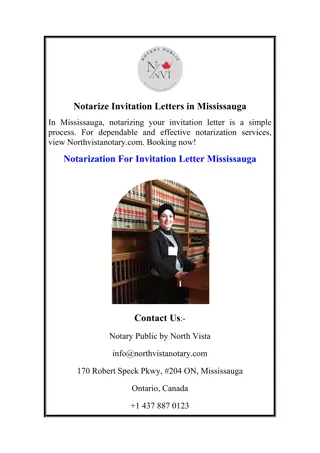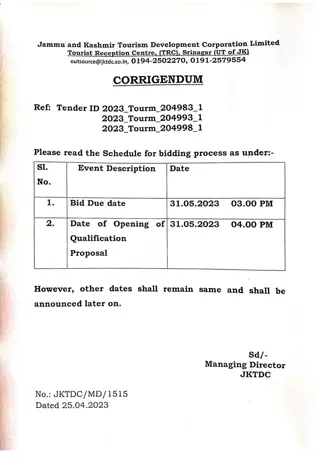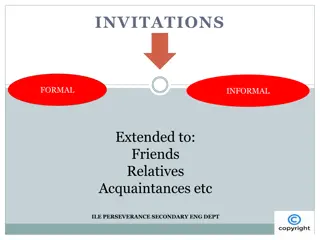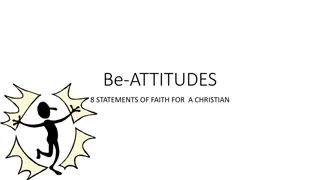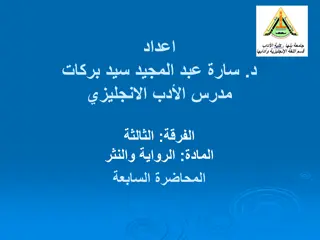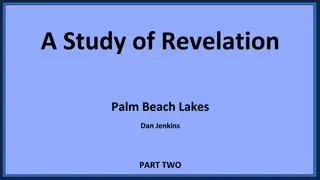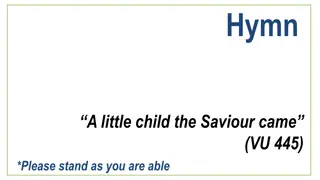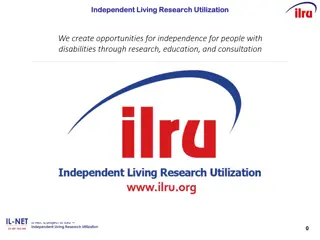
The Genre and Origins of the New Testament Gospels
Dive into the nature, genre, and origins of the New Testament Gospels, exploring how each Gospel contributes uniquely to the multi-faceted picture of Jesus. Discover the historical narrative of the Gospels and learn how to interpret them effectively for a comprehensive understanding.
Download Presentation

Please find below an Image/Link to download the presentation.
The content on the website is provided AS IS for your information and personal use only. It may not be sold, licensed, or shared on other websites without obtaining consent from the author. If you encounter any issues during the download, it is possible that the publisher has removed the file from their server.
You are allowed to download the files provided on this website for personal or commercial use, subject to the condition that they are used lawfully. All files are the property of their respective owners.
The content on the website is provided AS IS for your information and personal use only. It may not be sold, licensed, or shared on other websites without obtaining consent from the author.
E N D
Presentation Transcript
Chapter 8 HEARING THE GOOD NEWS: NEW TESTAMENT HISTORICAL NARRATIVE (GOSPELS & ACTS)
CHAPTER OUTLINE The Nature of the Gospels The Genre of the Gospels The Origins of the Gospels General Hermeneutical Principles Sample Exegesis: Mark 15:33 41
THE NATURE OF GOSPELS The Gospels make up the first four books of the New Testament, bearing the titles The Gospel according to Matthew, Mark, Luke, and John, respectively. Originally, the word Gospel which literally means good news was used for oral, rather than written, proclamation.
THE GENRE OF GOSPELS As early as 1915, C. W. Votaw found similarities between the Gospels and popular biographical literature of the Greco-Roman era. He suggested that he Gospels be put in the category of Greco-Roman biography (bios). Graeco-Roman biography remains the most commonly proposed genre for the Gospels.
THE GENRE OF THE GOSPELS Differences between the Gospels and bioi include the following: Lack of biographical detail regarding Jesus Lack of consistent chronological order We know little of the events prior to his ministry Only Luke has a formal literary preface All four Gospels are anonymous Gospels intended for a Christian audience In this light, it seems preferable to view the Gospels (and Acts) as a subgenre of historical narrative (similar to Old Testament narrative).
THE ORIGINS OF THE GOSPELS Why Four Gospels? While the four Gospels all focus on the story of Jesus, each Gospel has a unique contribution to make, so that what emerges is a composite, multi-faceted picture of Jesus. Understanding that each evangelist had his own unique purpose in writing his Gospel and that the needs of the readers differed, the perceptive interpreter will be careful to read each Gospel in its own right while paying careful attention to the distinctive story line ( vertically )and theological emphasis of the respective Gospel. At the same time, the other Gospels should not be ignored because they serve to enhance the overall understanding of the story of Jesus; thus you should also read across all four Gospels ( horizontally ).
THE ORIGINS OF THE GOSPELS The Critical Study of the Gospels At the end of the eighteenth century, J. J. Griesbach assigned the term Synoptic to the first three Gospels. The similarities between the Gospels are not superficial but extend even to wording, order of pericopes (small, self-contained narrative units), parenthetical material, and biblical quotations. Example: Matthew 5:3 12//Luke 6:20b 23 The similarities in presentation especially among the three Synoptic Gospels are best explained on the assumption of some kind of literary interdependence.
THE ORIGINS OF THE GOSPELS The Critical Study of the Gospels Apart from this high degree of similarity, the Gospels also exhibit many differences. Over the last two centuries, there have been three major approaches to this problem of Gospel origins and development: Form criticism Source criticism Redaction criticism Above all, the eyewitness character of the Gospels must be affirmed and be kept in mind.
THE ORIGINS OF THE GOSPELS The Critical Study of the Gospels The great similarities, particularly in the wording of the Greek text, seem to suggest that the three Gospel writers were dependent on each other to a considerable extent. Augustinian Proposal Griesbach Hypothesis Two-Document Hypothesis
THE ORIGINS OF THE GOSPELS John and the Synoptics The blocks of material that are common to John and the Synoptics are limited to the feeding of the 5,000, the anointing, and the passion narrative. In addition, John features extended discourses, such as Jesus encounters with Nicodemus and the Samaritan woman (John 3 4) or the Farewell Discourse in John 13 17. Also included are several startling signs of Jesus, most notably the raising of Lazarus (John 11). The degree of difference between John and the Synoptic Gospels suggests that John probably wrote his Gospel independently of the other three, although it is likely that he was aware of their existence.
THE ORIGINS OF THE GOSPELS The Historical Reliability of the Gospels Critical scholars have suggested that large blocks of the Gospel material lack historical credibility. Thus, the Gospel records of the words and deeds of Jesus are judged to be unreliable. Example: Matthew 4//Luke 4 Rather than doubt the credibility of the Gospels and Acts, the judicious interpreter will evaluate these documents with an understanding of the conventions of their day. Students of the Gospels ought not to force modern conventions onto the Gospels but must understand that the use of paraphrase and the telescoping of events were legitimate devices in ancient historiography. Moreover, there is sufficient agreement in the relating of accounts and the placement of events to engender confidence in the evangelists credibility.
GENERAL HERMENEUTICAL PRINCIPLES Characteristics of the Gospels Historical Context Literary Context External Elements Author Narrator Reader Internal Elements Setting Plot Characterization Style Narrative Time
GENERAL HERMENEUTICAL PRINCIPLES Chronology/Arrangement Matthew Mark Luke-Acts John Structure Matthew Mark Luke-Acts John
GENERAL HERMENEUTICAL PRINCIPLES
SAMPLE EXEGESIS: MARK 15:3341 History Literature Theology
GUIDELINES FOR INTERPRETING THE GOSPELS AND ACTS Before you begin working on your target text, have a general understanding of the background issues related to the book you are studying. Identify the theological emphases and themes, not only of the author, but of the particular book. Make sure you understand the purpose of the book. Based on the structure and arrangement of the entire narrative, determine the boundaries of the pericope or text under study. Keep in mind that the author s own literary structure and presentation provide guidelines for this process. Ensure that you correctly identify transitional phrases, literary inclusions, and various other textual markers found. 1. 2.
GUIDELINES FOR INTERPRETING THE GOSPELS AND ACTS Identify the literary context of your passage, first vertically, in its own setting and then horizontally, comparing it with parallel accounts if any. Keep in mind the redactional patterns of each evangelist. In light of the particular characteristics of the genre of the Gospels and Acts, identify how the external elements function in the narrative. The external elements of a narrative include the author, the narrator, and the reader. Assume the mindset of the implied reader. In this step you should also clarify issues related to expositional mode, narration vs. commentary, and point of view. 3. 4.
GUIDELINES FOR INTERPRETING THE GOSPELS AND ACTS Identify the internal elements and how they function in the narrative. These include the setting, plot, characterization, literary style, and narrative time. Do any of these elements contribute significantly to the interpretation of your target text? Take note of the historical-cultural context. Keep in mind that the Gospels have two levels: the life setting in Jesus day and the life setting of the Church at the time of composition. What is the contribution of features such as geography, politics, economics, military and war, cultural and religious customs? 5. 6.
GUIDELINES FOR INTERPRETING THE GOSPELS AND ACTS Keep in mind that the entire interpretive process should be based on sound exegetical procedures. Take note of the meaning of significant words and the contribution of grammar and syntax. Draw all your findings together and summarize the meaning of your pericope or text. Ensure that this is consistent with authorial intent. Finally, following the appropriate guidelines for this last step, apply this passage to the contemporary situation. 7. 8. 9.




